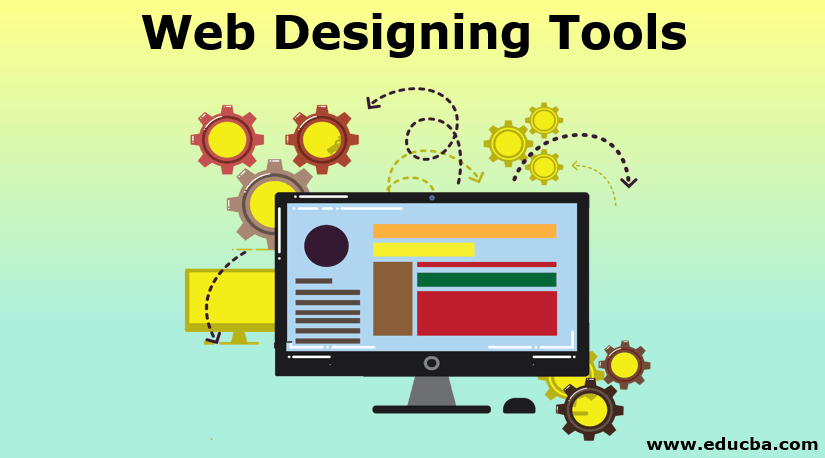Aligned Position Web Design: Boost Your Brand’s Visibility with a Stunning Website
Aligned Position Web Design: Boost Your Brand’s Visibility with a Stunning Website
Blog Article
The Most Effective Sorts Of Website Design to Improve User Experience and Involvement
In the ever-evolving landscape of electronic communication, the performance of Web style significantly affects individual experience and engagement. Numerous design techniques, such as minimal, responsive, and interactive designs, each deal one-of-a-kind advantages that can provide to diverse user needs.
Minimalist Web Style
As electronic landscapes become significantly cluttered, minimal Web layout has arised as an effective method to enhancing user experience. This layout ideology prioritizes simplicity, focusing on vital components while eliminating unnecessary diversions. By making use of sufficient white area, straightforward navigating, and a limited shade palette, minimal layout cultivates clearness and directs individual interest to vital material.
The core principle of minimalist Web style is to create a smooth communication for individuals. By decreasing cognitive lots, customers can promptly grasp information without really feeling overwhelmed. This straight strategy not only boosts functionality yet additionally motivates interaction, as site visitors are more probable to discover a site that is easy and aesthetically appealing to browse.
Additionally, minimal design typically stresses typography and imagery, utilizing these components purposefully to share messages efficiently. This concentrate on necessary elements can improve brand name identity and produce an unforgettable customer experience. Essentially, minimalist website design is not just a trend; it is a thoughtful approach that acknowledges the relevance of user-centered layout. By removing additional elements, developers can produce a much more appealing, efficient, and satisfying Web experience for all individuals.
Receptive Website Design
In today's diverse digital atmosphere, receptive Web design has actually become essential for producing a seamless user experience across a plethora of tools. As customers access internet sites on smart devices, tablets, desktop computers, and laptop computers, the capacity of a website to adapt its design and web content to different display sizes and resolutions is crucial.
Receptive Web layout utilizes flexible grids, images, and CSS media questions to make certain that Web content exists ideally, despite the tool made use of. This strategy not just improves the visual allure of a website yet also considerably enhances functionality. Individuals are a lot more most likely to engage with a site that provides a constant experience, as it removes the irritation of needing to focus or scroll excessively.
By embracing receptive style, organizations can improve their visibility and get to a wider audience. In recap, responsive Web design is a fundamental technique that improves customer experience, interaction, and overall complete satisfaction.
Interactive Web Style
Responsive website design prepares for enhancing individual experience, but interactive website design takes this an action better by involving customers in a more vibrant means - Aligned Position Web Design. By incorporating elements such as computer animations, clickable models, and real-time comments, interactive website design captivates individuals, drawing them right into a richer surfing experience
This approach not just cultivates interaction yet additionally encourages users to explore content actively rather than passively eating it. Strategies such as gamification, where users make incentives for completing tasks, can dramatically boost the time invested in a site and improve general fulfillment. Interactive functions can simplify complex information, making it more absorbable and delightful.

Integrating interactive design elements can additionally bring image source about higher conversion rates, as individuals are much more likely to involve with a site that proactively involves them. Aligned Position Web Design. Inevitably, interactive website design transforms individual experiences right into unforgettable trips, making certain that site visitors return time after time
Flat Style
Identified by its minimalistic strategy, flat design highlights simpleness and capability, stripping away unnecessary elements and concentrating on necessary functions. This layout approach prioritizes usability, ensuring that users can browse user interfaces effortlessly and effectiveness. By using a tidy aesthetic, level layout gets rid of the mess often found in extra luxuriant designs, therefore improving individual concentrate on web content and capability.
The hallmark of level layout hinges on its usage of vibrant shades, easy typography, and geometric forms. These elements add to a visually appealing interface that is both modern and friendly. In addition, level design cultivates a sense of quality, enabling customers to determine important activities and details without distraction.
In addition, flat style is specifically efficient in responsive website design, as its simplicity converts well throughout numerous gadgets and screen sizes. The absence of elaborate structures and slopes reduces packing times, which is vital for maintaining customer involvement. As digital landscapes continue to progress, flat design stays a pertinent option for developing easy to use websites that enhance overall experience. By concentrating on essential features, flat layout not only satisfies individual requirements yet likewise encourages seamless communication, making it an important element of effective Web design approaches.
Flexible Web Design
Flexible website design tailors the customer experience by producing several dealt with formats customized to various display sizes and devices. Unlike receptive design, which fluidly readjusts a single layout, flexible directory design uses distinctive layouts for particular breakpoints, ensuring optimum presentation on various platforms. This technique permits designers to concentrate on the distinct characteristics of each device, enhancing use by delivering exactly what customers need based upon their context.
Among the main advantages of adaptive website design is its capability to optimize lots times and performance. By serving customized material and photos that fit the customer's tool, web sites can reduce information use and boost loading rates. This is especially helpful for customers with slower connections or restricted information strategies.

In addition, adaptive design facilitates a much more controlled and constant branding experience. Because developers produce several designs, they can ensure that the aesthetic components line up with the brand's identification across various systems - Aligned Position Web Design. This leads to a cohesive customer experience, boosting interaction and promoting customer retention
Final Thought
Minimalist style cultivates clarity and focus, while receptive layout ensures flexibility across various devices, advertising accessibility. Jointly, these layout comes close to contribute to the development of straightforward atmospheres that not just improve satisfaction yet additionally drive greater conversion prices, emphasizing their important value in modern Web design techniques.

Minimalist layout cultivates clearness and focus, while responsive layout makes sure flexibility throughout different gadgets, advertising availability. Jointly, these layout approaches contribute to the development of user-friendly environments that not only improve fulfillment however likewise drive higher conversion prices, underscoring their essential importance in contemporary Web style methods.
Report this page